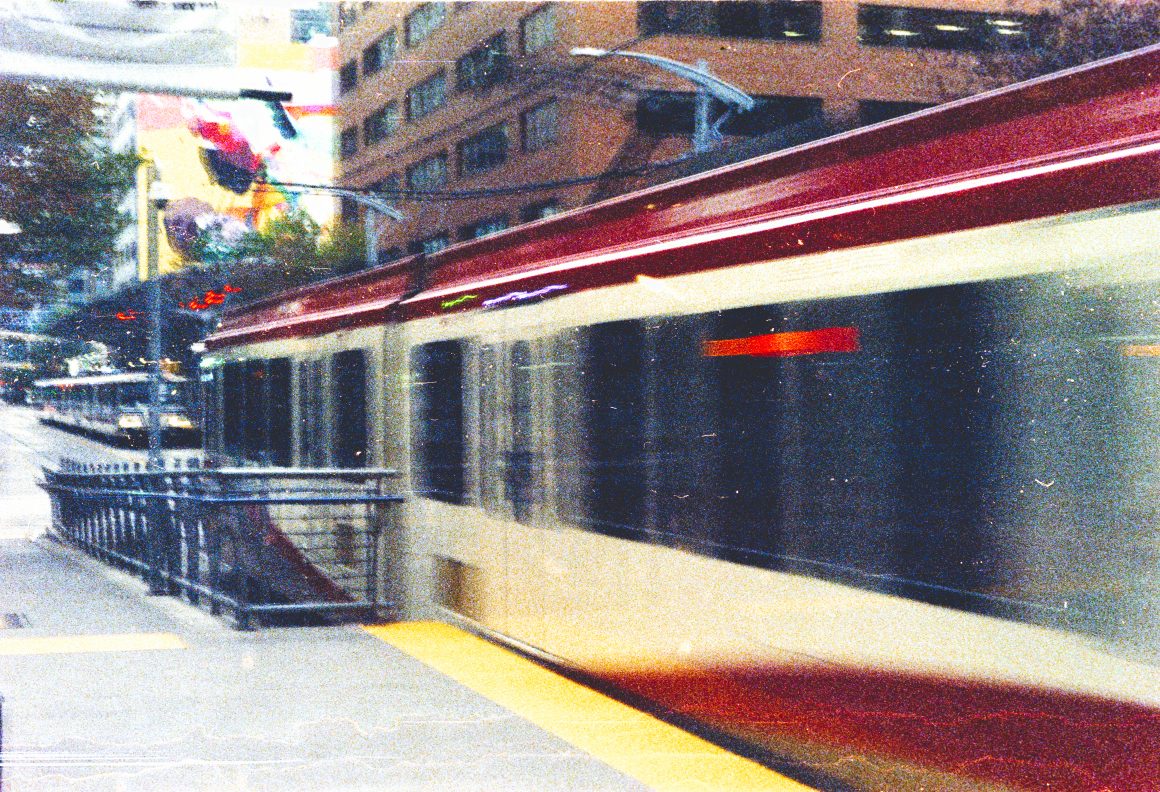
Calgary Transit is not the best — here’s how to make it better
By Sheroog Kubur, October 25 2023—
Contrary to popular belief, Calgary’s public transit system isn’t that bad. That being said, it is comparatively much worse when looking at the public transit systems across the country, most notably the SkyTrains of Vancouver. Despite being bigger by area and having the third largest population in Canada, Calgary’s transit system lacks. The times for bus and train arrivals are irregular and unreliable, the train tracks are wide open and quite old, meaning they are frequently subject to maintenance and interruptions, and the timing of transit doesn’t account for just how busy it can be during peak hours. The transit system won’t be able to accommodate everyone all of the time, but there are little measures that can be taken to make it a little more accessible.
The city’s wisest decision was choosing to focus on improving its bus routes as opposed to adding new train lines. In 2018, the entire transit system saw a fresh coat of paint, breaking apart routes that travelled long distances, introducing the expedited MAX buses and promising shorter wait times for busy routes. To compare, the old 73 bus route started and ended at Brentwood LRT station. This route was replaced by several smaller routes, notably the MAX Orange which goes from Brentwood LRT station to Saddletowne LRT station. The 73 route always arrives every 18 minutes, while the new MAX Orange route comes every 10 minutes during peak times and, at maximum, every 25 minutes. This was a welcome adjustment to the bus system since it shortened the length of time between buses and recognized that some stops were more necessary than others. By focusing on improving the bus routes, certain parts of the city have become much more accessible to those who rely on transit.
This was at the expense, however, of the other less popular bus routes being shortened or cut completely. Inner city transit is reliable enough to get where you need to be, but trying to reach the suburbs or communities not surrounding LRT lines is almost impossible after certain hours, with buses either stopping their routes early in the evening or being reduced to above 30-minute wait times. This, coupled with a general lack of coordination between bus and train lines means the possibility of being stranded at a train station is very real for people living on the outskirts of the city.
But all of this doesn’t address the issue of the city’s increasing push towards relying on digital tracking. While the city bus schedules are still available in PDF form and the phone number on each transit sign is still operational, there is a general sense that you’re better off using the app. LRT stations have replaced their physical schedules with screens that dedicate more of their time to advertisements rather than displaying arrival times and these arrival times are often unavailable.
The app is also notoriously unreliable, with users often debating whether or not the green or red one is more accurate. While the app and screens offer the convenience of a general idea of a route’s schedule, they lack the thing people need most — accuracy. There are countless horror stories of being stranded outside after the app led a user astray or the train times being unavailable. Calgary Transit could follow the Vancouver model and simply display printed versions of the key bus and train routes with their times, making it more friendly for technology-averse folks and tourists who may not want to download an app.
The main issue with Calgary Transit is that it seems to think we exist in a car-centred city. While Calgary is big geographically, the spread out population and unwillingness to expand social institutions outside of cultural centres means people need to travel far distances within the city. However, the transit routes behave as if only residents of the inner city rely on public transit. Calgary is moving up in ranks as a population centre and its public transportation needs to reflect that. As long as people keep coming to this city, the public transit needs to keep up.
This article is a part of our Opinions section and does not necessarily reflect the views of the Gauntlet editorial board.
